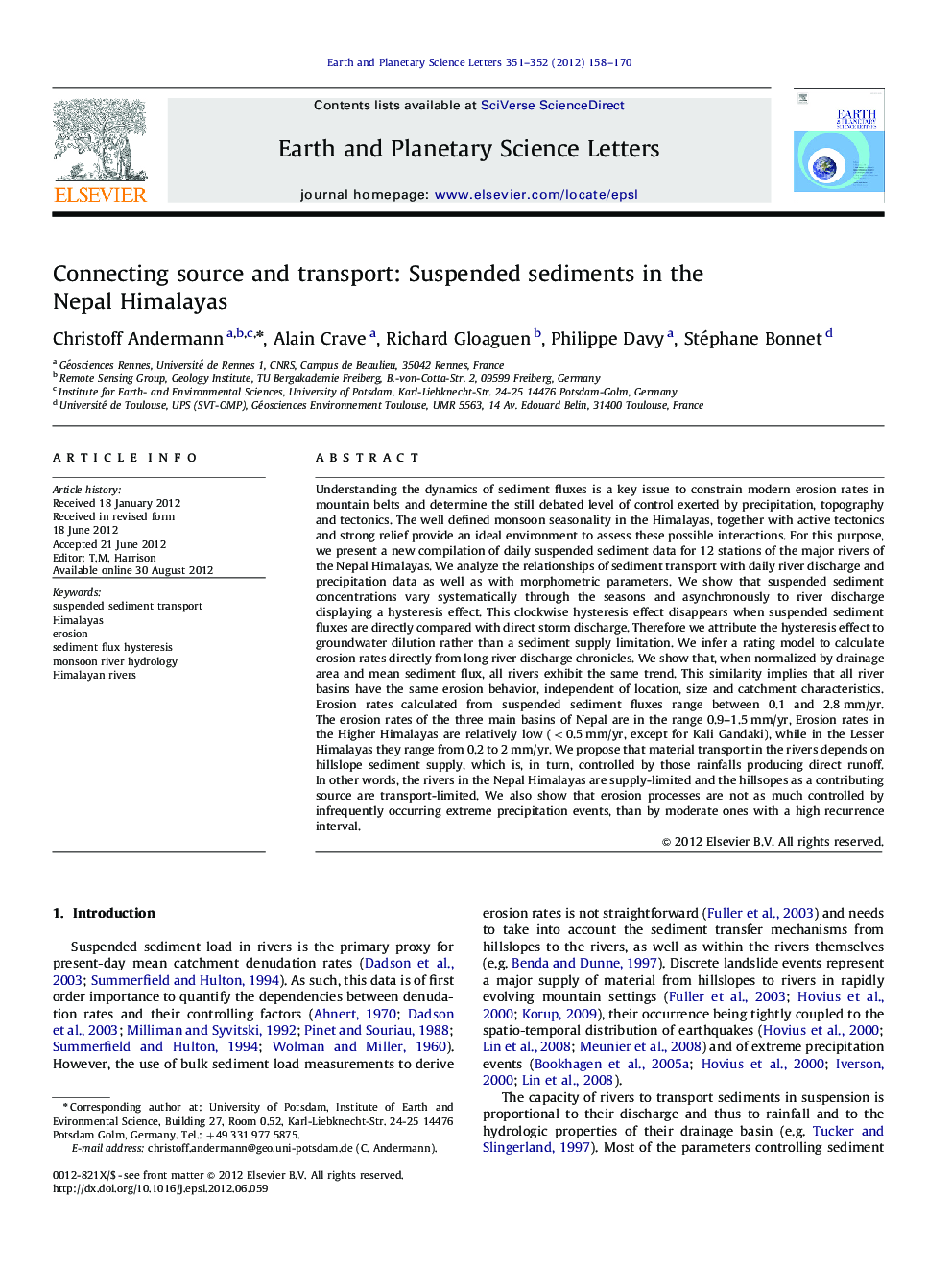| کد مقاله | کد نشریه | سال انتشار | مقاله انگلیسی | نسخه تمام متن |
|---|---|---|---|---|
| 4677335 | 1634797 | 2012 | 13 صفحه PDF | دانلود رایگان |

Understanding the dynamics of sediment fluxes is a key issue to constrain modern erosion rates in mountain belts and determine the still debated level of control exerted by precipitation, topography and tectonics. The well defined monsoon seasonality in the Himalayas, together with active tectonics and strong relief provide an ideal environment to assess these possible interactions. For this purpose, we present a new compilation of daily suspended sediment data for 12 stations of the major rivers of the Nepal Himalayas. We analyze the relationships of sediment transport with daily river discharge and precipitation data as well as with morphometric parameters. We show that suspended sediment concentrations vary systematically through the seasons and asynchronously to river discharge displaying a hysteresis effect. This clockwise hysteresis effect disappears when suspended sediment fluxes are directly compared with direct storm discharge. Therefore we attribute the hysteresis effect to groundwater dilution rather than a sediment supply limitation. We infer a rating model to calculate erosion rates directly from long river discharge chronicles. We show that, when normalized by drainage area and mean sediment flux, all rivers exhibit the same trend. This similarity implies that all river basins have the same erosion behavior, independent of location, size and catchment characteristics. Erosion rates calculated from suspended sediment fluxes range between 0.1 and 2.8 mm/yr. The erosion rates of the three main basins of Nepal are in the range 0.9–1.5 mm/yr, Erosion rates in the Higher Himalayas are relatively low (<0.5 mm/yr, except for Kali Gandaki), while in the Lesser Himalayas they range from 0.2 to 2 mm/yr. We propose that material transport in the rivers depends on hillslope sediment supply, which is, in turn, controlled by those rainfalls producing direct runoff. In other words, the rivers in the Nepal Himalayas are supply-limited and the hillsopes as a contributing source are transport-limited. We also show that erosion processes are not as much controlled by infrequently occurring extreme precipitation events, than by moderate ones with a high recurrence interval.
► New large scale erosion rates from suspended sediment data for the Himalayan front.
► Characterization of annual sediment flux hysteresis dynamics for Himalayan rivers.
► Rain events producing direct runoff control erosion in the monsoonal Himalayas.
► Statistical distribution of sediment fluxes is similar for all Himalayan rivers.
► New conceptual model to explain annual suspended sediment flux hysteresis.
Journal: Earth and Planetary Science Letters - Volumes 351–352, 15 October 2012, Pages 158–170